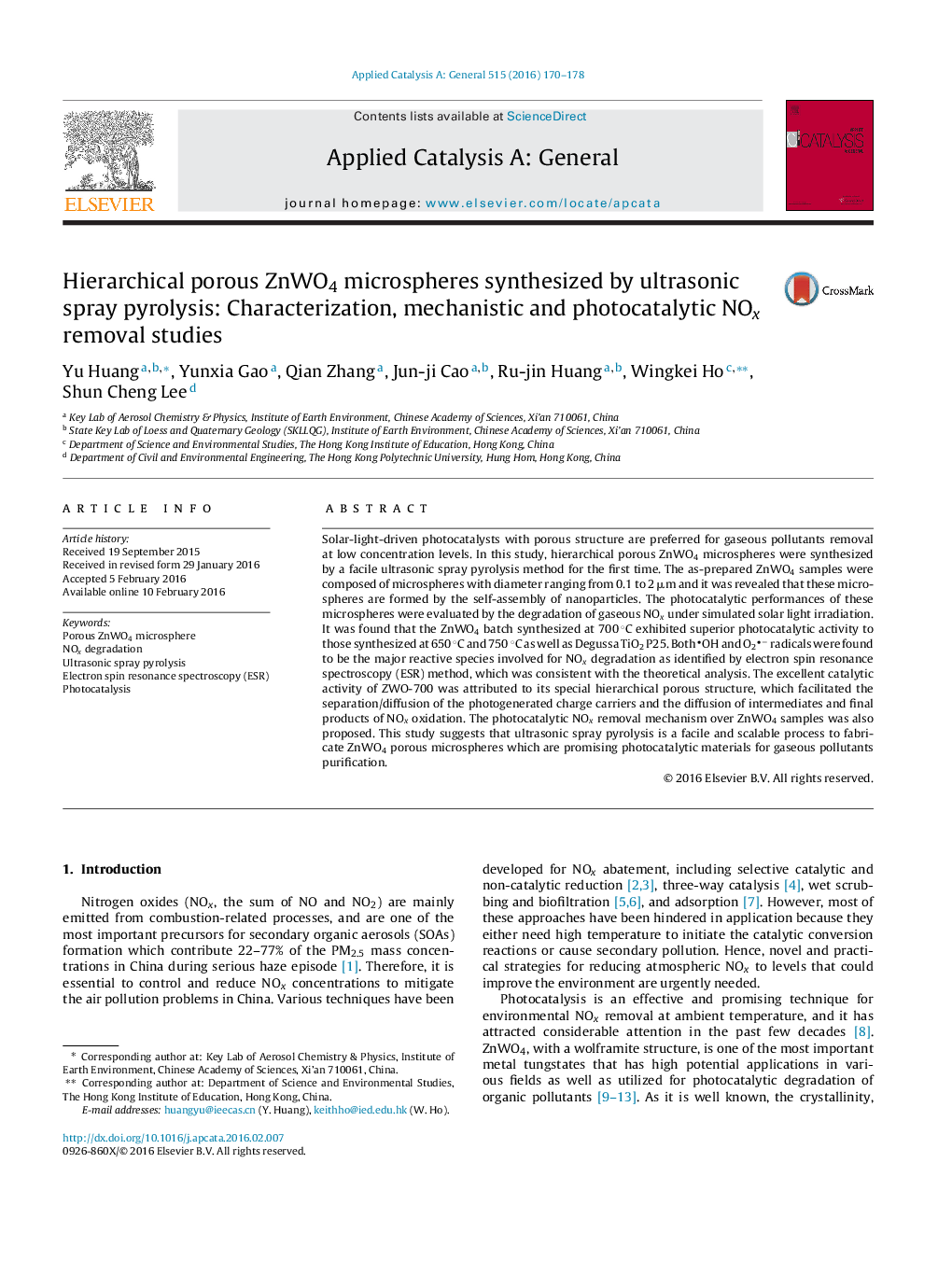| کد مقاله | کد نشریه | سال انتشار | مقاله انگلیسی | نسخه تمام متن |
|---|---|---|---|---|
| 38875 | 45794 | 2016 | 9 صفحه PDF | دانلود رایگان |

• Hierarchical porous ZnWO4 microspheres were synthesized by a template-free method.
• Synthesis temperature was a key factor influencing the microstructures of ZnWO4.
• The photocatalytic properties were studied for NOx removal.
• O2− and OH radicals function as active species for NOx degradation.
• The photocatalyitc NOx removal mechanism over ZnWO4 samples was proposed.
Solar-light-driven photocatalysts with porous structure are preferred for gaseous pollutants removal at low concentration levels. In this study, hierarchical porous ZnWO4 microspheres were synthesized by a facile ultrasonic spray pyrolysis method for the first time. The as-prepared ZnWO4 samples were composed of microspheres with diameter ranging from 0.1 to 2 μm and it was revealed that these microspheres are formed by the self-assembly of nanoparticles. The photocatalytic performances of these microspheres were evaluated by the degradation of gaseous NOx under simulated solar light irradiation. It was found that the ZnWO4 batch synthesized at 700 °C exhibited superior photocatalytic activity to those synthesized at 650 °C and 750 °C as well as Degussa TiO2 P25. Both OH and O2− radicals were found to be the major reactive species involved for NOx degradation as identified by electron spin resonance spectroscopy (ESR) method, which was consistent with the theoretical analysis. The excellent catalytic activity of ZWO-700 was attributed to its special hierarchical porous structure, which facilitated the separation/diffusion of the photogenerated charge carriers and the diffusion of intermediates and final products of NOx oxidation. The photocatalytic NOx removal mechanism over ZnWO4 samples was also proposed. This study suggests that ultrasonic spray pyrolysis is a facile and scalable process to fabricate ZnWO4 porous microspheres which are promising photocatalytic materials for gaseous pollutants purification.
Figure optionsDownload high-quality image (112 K)Download as PowerPoint slide
Journal: Applied Catalysis A: General - Volume 515, 10 April 2016, Pages 170–178